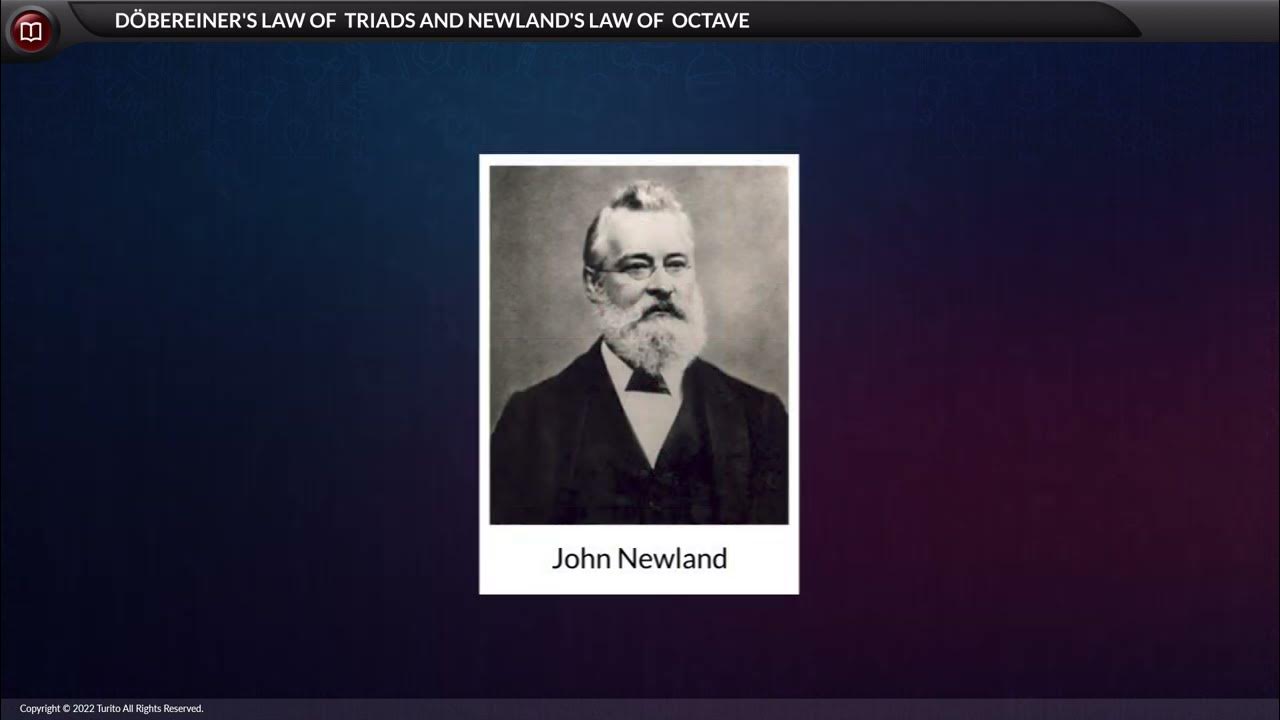PERKEMBANGAN SISTEM PERIODIK UNSUR
Summary
TLDRIn this engaging video, Udin discusses the development of the periodic system of elements, highlighting key concepts like the triad law by Dobereiner, the octave law by Newlands, and the contributions of Mendeleev and Meyer. The video explains how elements are grouped based on their atomic masses and properties, leading to the modern periodic table proposed by Henry Moseley, which organizes elements by increasing atomic number. Udin emphasizes the importance of understanding these historical developments in chemistry, encouraging viewers to share the video for broader educational impact.
Takeaways
- 😀 The development of the periodic table is crucial for understanding the properties of elements in chemistry.
- 📚 Dobereiner's Triad Law classifies elements into groups of three based on similar chemical properties and atomic mass.
- ⚖️ The middle element in a triad has an atomic mass that is the average of the other two elements.
- 🎵 Newlands' Octave Law suggests that elements repeat their properties every eighth element when arranged by atomic mass.
- ❌ The Octave Law has limitations as it does not apply to heavier elements with larger atomic masses.
- 🔬 Mendeleev's and Meyer's laws expanded on earlier classifications, focusing on both physical and chemical properties of elements.
- 📊 Mendeleev's periodic law emphasizes a systematic arrangement, placing elements with similar properties in vertical columns.
- 🧪 The modern periodic table, developed by Henry Moseley, organizes elements by increasing atomic number instead of atomic mass.
- 💡 Elements in the modern periodic table are grouped by valence electrons, showcasing their chemical behavior.
- 🌟 The periodic table includes main groups and transition elements, facilitating a better understanding of elemental relationships.
Q & A
What is the Triad Law and who proposed it?
-The Triad Law, proposed by Dobereiner, groups elements with similar chemical properties into sets of three (triads). The middle element in a triad has an atomic mass that is approximately the average of the other two.
What are the limitations of the Triad Law?
-The Triad Law has limitations because it cannot account for all elements that share similar properties, as many such elements exist outside the triad structure.
What does the Octave Law state?
-The Octave Law, proposed by Newlands, organizes elements in groups of eight, indicating that every eighth element exhibits similar properties.
Why is the Octave Law considered insufficient?
-The Octave Law is insufficient because it does not apply to heavier elements or elements that had not yet been discovered at the time.
What advancements did Mendeleev and Meyer contribute to the periodic table?
-Mendeleev and Meyer improved the arrangement of elements by classifying them based on both atomic mass and chemical properties, leading to a more complete understanding of periodicity.
How did Mendeleev's periodic table arrange the elements?
-Mendeleev's periodic table arranged elements such that those with similar properties were placed in vertical columns, known as groups.
What is the Modern Periodic Law and who formulated it?
-The Modern Periodic Law, formulated by Moseley, organizes elements by increasing atomic number rather than atomic mass, leading to a more accurate representation of elemental properties.
How does the Modern Periodic Table categorize elements?
-In the Modern Periodic Table, elements are categorized based on their valence electrons, with elements having the same number of valence electrons placed in the same group.
What is the significance of organizing elements by atomic number?
-Organizing elements by atomic number rather than atomic mass resolves inconsistencies in earlier tables and allows for clearer periodic trends and relationships between elements.
What are the two types of groups in the Modern Periodic Table?
-The Modern Periodic Table contains two types of groups: the main groups (1A to 8A) and the transition metals (1B to 8B).
Outlines

Cette section est réservée aux utilisateurs payants. Améliorez votre compte pour accéder à cette section.
Améliorer maintenantMindmap

Cette section est réservée aux utilisateurs payants. Améliorez votre compte pour accéder à cette section.
Améliorer maintenantKeywords

Cette section est réservée aux utilisateurs payants. Améliorez votre compte pour accéder à cette section.
Améliorer maintenantHighlights

Cette section est réservée aux utilisateurs payants. Améliorez votre compte pour accéder à cette section.
Améliorer maintenantTranscripts

Cette section est réservée aux utilisateurs payants. Améliorez votre compte pour accéder à cette section.
Améliorer maintenantVoir Plus de Vidéos Connexes

Perkembangan Sistem Periodik Unsur

Tabel periodik Unsur bagian 1- Perkembangan Tabel Periodik Unsur- KIMIA SMA kelas 10 semester 1

Perkembangan Sistem Periodik Unsur | KIMIA KELAS 10

Perkembangan Tabel Periodik Unsur Kimia Kelas 10

Chemistry - Grade 9 - The periodic table - Dobereiner's law of Triads and Newland's law of octave

A HISTÓRIA DA TABELA PERIÓDICA | FALA CIENTISTA
5.0 / 5 (0 votes)
